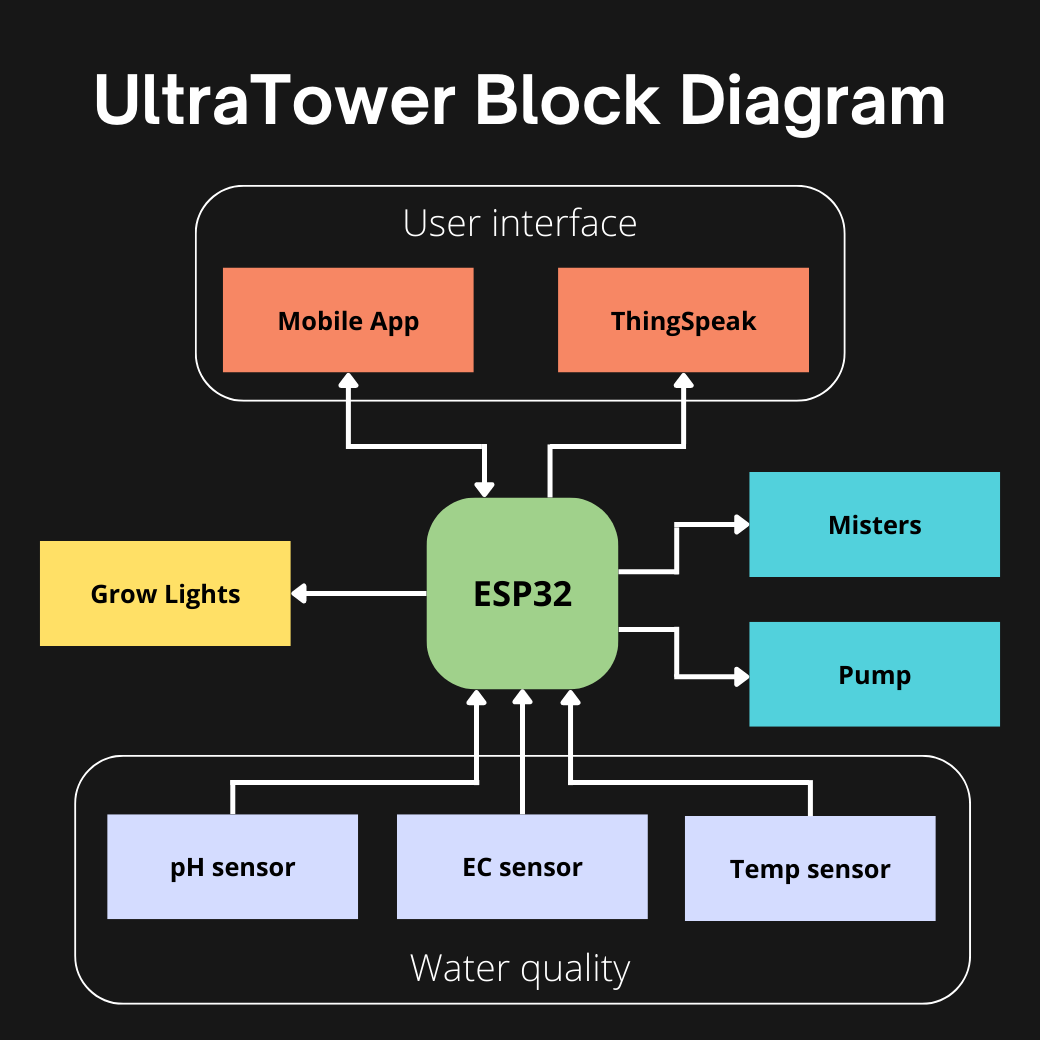
Microcontroller:
The chosen microcontroller is an ESP32 because:
- The high frequency generation is simple
- Bluetooth and WiFi (to communicate with a phone or send data over the internet)
- Low power consumption
- Capacitive touch GPIO (water level sensors)
- Lots of pins for the many sensors
The ESP32 MCU is the heart of the system. It manages (or will manage) all the following functions.
Misters:
For the moment I am focusing on the optimisation of the most important block which is the misters. It is the activation of the disks at 108kHz that allows to create the fog composed of water and nutrients. As this log shows it's going pretty well.
Pump:
The pump is a finished block, it allows the water to flow back into the small tank when the water level is low. Because the disks should not work without water, it damages them.
Water quality:
These are the next blocks I need to work on. They consist of a pH sensor, an EC sensor and temperature sensors (in the main tank, root chamber and ambient temperature). The water quality is very important, for the plants to grow optimally.
User interface
Once the sensors are implemented, adding thinkspeak will be quite simple to see datas in real time. In the future, I'd like to make a Kotlin application to be able to receive data from the sensors but also to change the tower parameters (misters activation time, target pH, temperature alert, ...)
Light Grow
The addition of horticultural LEDs will allow plants to be grown anywhere, even in a cellar. But not necessary for sunny gardens or balconies.
A lot of work!!
 J Gleyzes
J Gleyzes
Discussions
Become a Hackaday.io Member
Create an account to leave a comment. Already have an account? Log In.